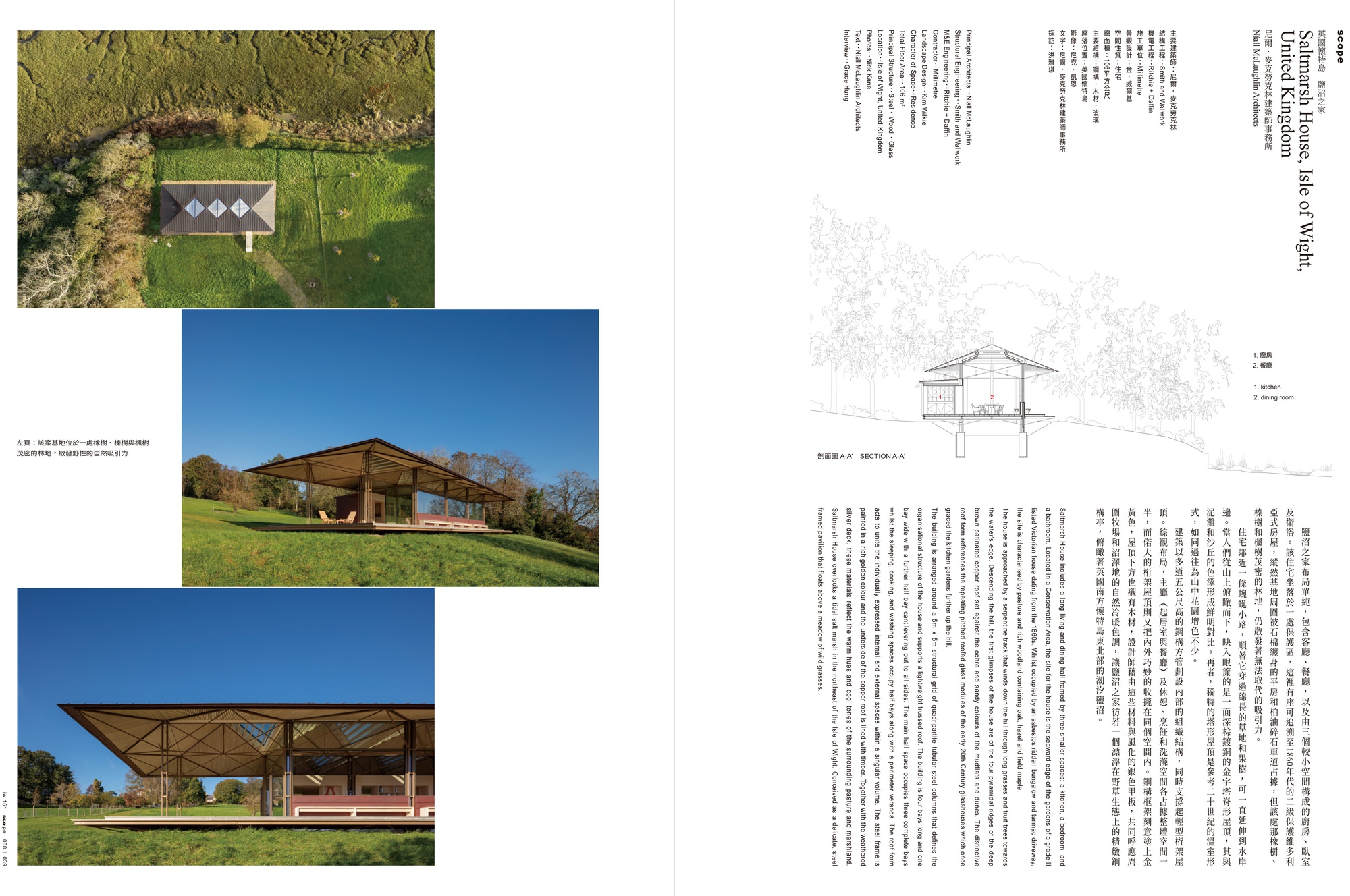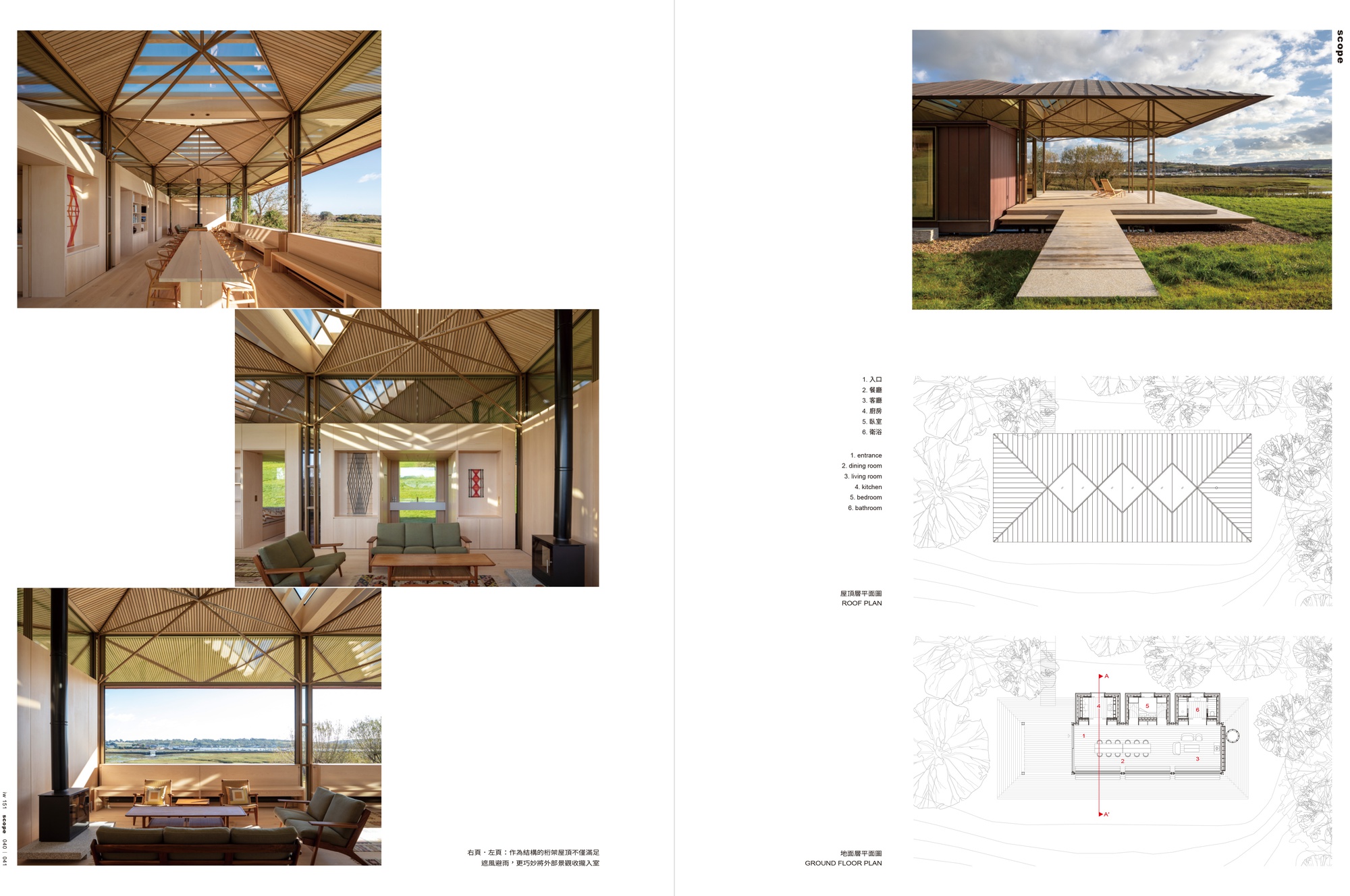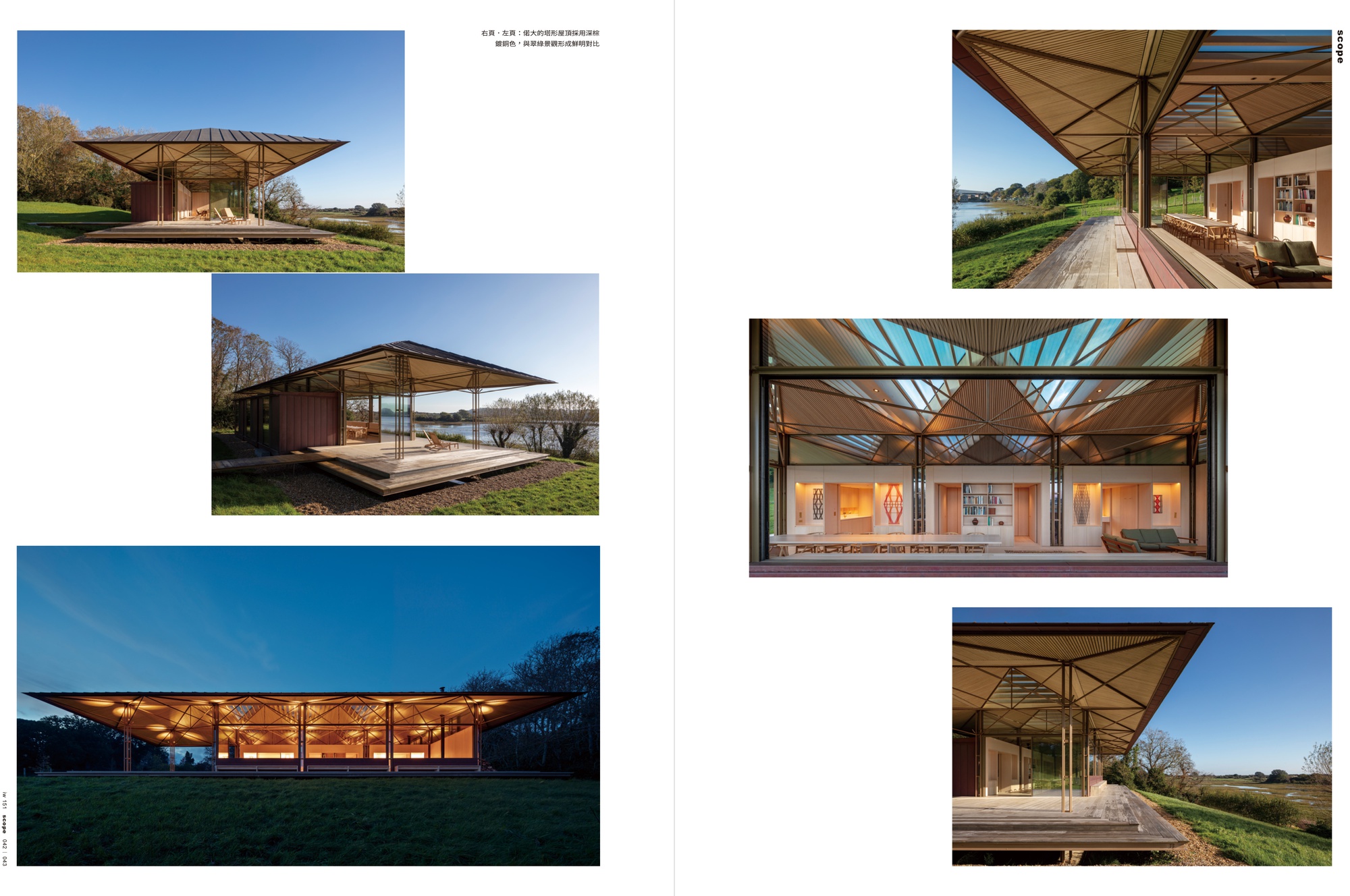Saltmarsh House - IW
JULY 2023
Text GRACE HUNG
IMAGES NICK KANE
Saltmarsh House includes a long living and dining hall framed by three smaller spaces: a kitchen, a bedroom, and a bathroom. Located in a Conservation Area, the site for the house is the seaward edge of the gardens of a grade II listed Victorian house dating from the 1860s. Whilst occupied by an asbestos ridden bungalow and tarmac driveway, the site is characterised by pasture and rich woodland containing oak, hazel and field maple.
The house is approached by a serpentine track that winds down the hill through long grasses and fruit trees towards the water's edge. Descending the hill, the first glimpses of the house are of the four pyramidal ridges of the deep brown patinated copper roof set against the ochre and sandy colours of the mudflats and dunes. The distinctive roof form references the repeating pitched roofed glass modules of the early 20th Century glasshouses which once graced the kitchen gardens further up the hill.
The building is arranged around a 5m x 5m structural grid of quadripartite tubular steel columns that defines the organisational structure of the house and supports a lightweight trussed roof. The building is four bays long and one bay wide with a further half bay cantilevering out to all sides. The main hall space occupies three complete bays whilst the sleeping, cooking, and washing spaces occupy half bays along with a perimeter veranda. The roof form acts to unite the individually expressed internal and external spaces within a singular volume. The steel frame is painted in a rich golden colour and the underside of the copper roof is lined with timber. Together with the weathered silver deck, these materials reflect the warm hues and cool tones of the surrounding pasture and marshland.
Saltmarsh House overlooks a tidal salt marsh in the northeast of the Isle of Wight. Conceived as a delicate, steel framed pavilion that floats above a meadow of wild grasses.
Download the article here.



